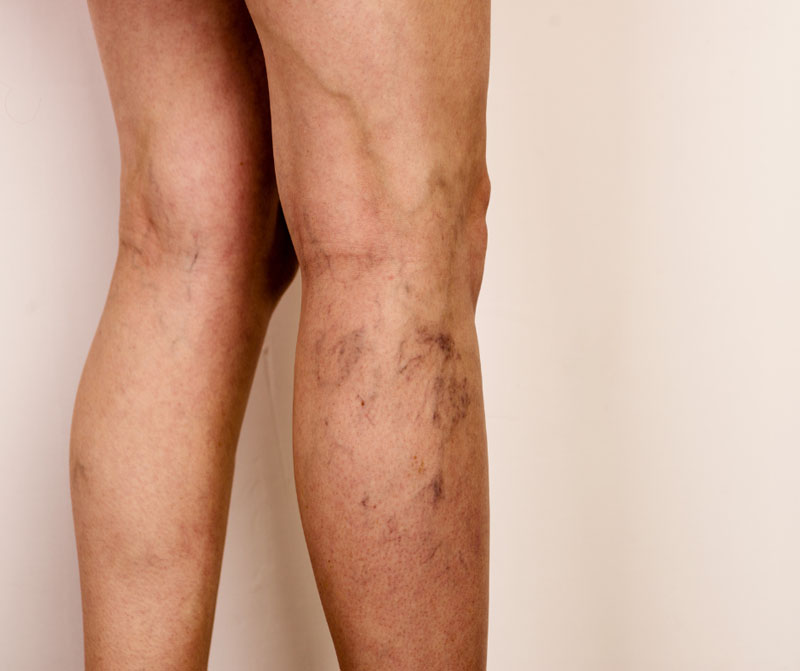As the weather turns cold, covering your legs is a matter of staying warm and comfortable. Next summer, however, you may be wearing pants, long dresses, or leggings for a different reason: to hide varicose veins. Those dark, bulging, twisted blood vessels visible just under the surface of the skin can affect your self-confidence, activity level, and quality of life. Having varicose vein treatment this winter can get your legs ready for shorts and swimsuits by summer.
Why You Shouldn’t Ignore Damaged Veins
Varicose veins and spider veins — essentially, smaller varicose veins — aren’t just unpleasant sights that can shake your self-esteem. They can also cause pain and discomfort that can make walking more difficult and lead you to skip favorite activities. Symptoms include:
- Itching or skin discoloration around the affected veins
- Leg cramps
- Pain, heaviness, or swelling in the legs
- Restless legs
- Achiness at the end of the day
- Ulcers or slow wound healing
By treating varicose veins, you can reduce or eliminate symptoms, making it easier to exercise and complete daily activities. Treatment can also boost your confidence in your legs’ appearance and help you present your healthiest self to the world. Fortunately, you and your physician have several vein care options from which to choose.
Varicose Vein Treatment Options
A vein health specialist will determine the most appropriate varicose vein treatment for you based on the severity of your symptoms, among other factors. Options include:
- Phlebectomy. Also known as ambulatory phlebectomy, this procedure involves removing a damaged vein through small slits in the skin, producing minimal scarring. With the unhealthy blood vessel gone, blood starts flowing through a healthy vein.
- Radiofrequency ablation. Appropriate for large varicose veins, this treatment uses radiofrequency energy (energy from radio waves) from a probe to seal unhealthy veins. Blood then reroutes through nearby healthy veins.
- Sclerotherapy. During this treatment, a chemical solution is injected into the varicose veins, preventing blood from entering. As a result, the closed-off veins gradually become scar tissue.
- VenaSeal™ procedure. This treatment uses a catheter to send a medical adhesive into damaged veins. The solution seals the blood vessels.
Medicare and many commercial insurance carriers may cover treatment for varicose veins, but proof of medical necessity may be required. Before treatment, check with your insurance to find out whether it will be covered.
Varicose veins are associated with chronic venous insufficiency, which is not curable, but it is treatable. Vein disease is progressive and new varicose veins will continue to develop in the future. A vein health specialist can monitor any future need for treatment.
The Advantages of Having Varicose Vein Treatment in Winter
If you’re considering varicose vein treatment this winter, your timing is perfect. Here’s why:
- Healing can take its time. Some treatments need time to have an effect as damaged veins fade. If you get treated in winter, your legs will have months to heal before summer arrives.
- Protecting your skin and concealing side effects are easier in winter. Pants can safeguard your newly treated legs against sun damage and hide side effects, such as redness.
- Your winter wardrobe is a great fit for varicose vein treatment. Wearing compression stockings after certain treatments, such as sclerotherapy and radiofrequency ablation, can aid healing. Prefer to keep the stockings out of sight? That’s no problem in winter — just wear them under your cold-weather attire. Bonus: Wearing compression stockings can be more comfortable in low temperatures.
Healthy lifestyle changes to relieve symptoms or prevent varicose veins from getting worse. Not quite ready to explore medical treatment for varicose veins? There’s plenty you can do on your own to alleviate symptoms or keep unhealthy veins from getting worse.
Try these tips:
- Don’t sit or stand for long periods, both of which can make blood flow more difficult.
- Stay physically active to help blood through your veins.
- Seek to reach and maintain a healthy weight to reduce pressure on your leg veins.
By making some simple lifestyle changes, you can help your veins stay as healthy as possible.







